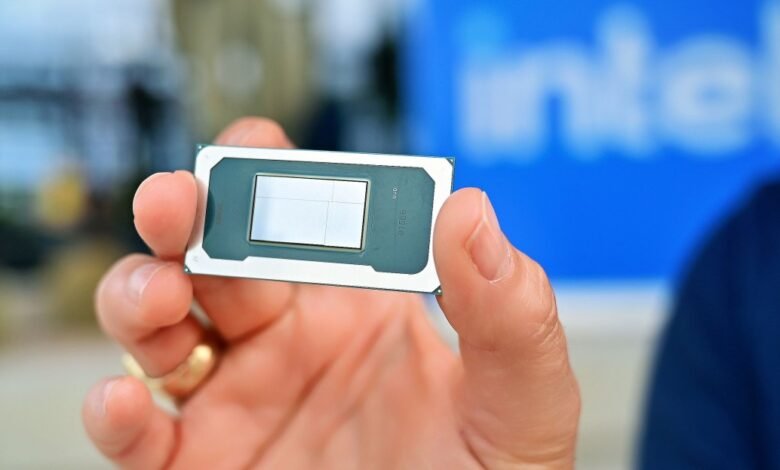Intel’s Panther Lake: Next-Gen Graphics for 2026 Laptops

▼ Summary
– Panther Lake is Intel’s upcoming processor family scheduled for late 2025 and early 2026, designed to deliver improved battery life, performance, gaming graphics, and affordability across laptops and handhelds.
– The chips will be available in three variants with 8-core and 16-core CPUs, featuring new Xe3 graphics cores and up to 12 ray-tracing units for enhanced integrated graphics performance.
– Intel claims Panther Lake will achieve up to 10% lower power consumption than Lunar Lake and offer significant performance gains, including 50% more multi-threaded performance and over 50% improved GPU power.
– New features include Intelligent Bias Control v3 for better gaming stability by offloading tasks to E-cores, precompiled game shaders to reduce stutter, and an updated NPU for AI tasks with support for advanced memory and media codecs.
– Panther Lake chips are already in production, with the compute tile using Intel’s 18A process, while some components like the platform controller and GPU tiles are manufactured externally.
Intel’s upcoming Panther Lake processors, slated for release in late 2025 and early 2026, promise to deliver significant improvements in battery life, performance, and integrated graphics capabilities for next-generation laptops and handheld devices. This new generation, also referred to as Intel Core Ultra Series 3, aims to offer more power efficiency and gaming prowess at accessible price points. Unlike previous architectures, Panther Lake will be available in three distinct configurations, effectively replacing both the lightweight Lunar Lake and the more robust Arrow Lake-H chips currently found in high-performance laptops.
The lineup includes 8-core and 16-core CPUs, each equipped with four next-generation Xe3 graphics cores. A premium 16-core variant will also be available, featuring 12 Xe3 graphics cores and 12 ray-tracing units. This represents the most powerful integrated graphics solution Intel has ever developed, offering a glimpse into the company’s potential future in desktop gaming GPUs.
According to Intel chief CPU architect Stephen Robinson, earlier generations forced consumers to choose between exceptional battery life (Lunar Lake) and higher throughput (Arrow Lake). With Panther Lake, Intel intends to resolve that dilemma. Although the new chips do away with Lunar Lake’s onboard memory, previously a key efficiency feature, and reintroduce low-power E-cores, Intel asserts that Panther Lake will consume up to 10 percent less power overall. Robinson emphasizes that this should translate into genuinely longer battery life in everyday applications, including Microsoft Teams.
In theoretical performance tests, the new architecture appears even more compelling. Built on the advanced 18A process, Panther Lake incorporates brand-new Cougar Cove performance cores (P-cores) and Darkmont efficiency cores (E-cores). Intel claims these deliver 40 percent lower power consumption at comparable single-threaded performance, or a 50 percent boost in multi-threaded tasks under similar power constraints. Graphics performance also sees a major uplift, with the new Xe3 GPU cores offering over 50 percent more power than their predecessors.
Actual performance will vary depending on which of the three chip configurations users select. While the top-tier model with 12 Xe3 GPU cores is expected to provide a 50 percent graphics improvement over Lunar Lake’s 8 Xe2 cores, it remains unclear how the entry-level version with just 4 Xe3 cores will compare, or whether certain models will offer superior battery life.
Even the most powerful 12-core Xe3 variant is expected to be suitable for compact handheld devices like the MSI Claw 8. Intel Fellow Tom Petersen indicated as much during a recent architecture presentation. These chips will also feature Intelligent Bias Control v3, a system that sends hints to Windows to shift gaming workloads to E-cores, freeing up P-core resources and allowing more power to be allocated to the GPU. Robinson notes, “We’re relying more heavily on our E-cores for gaming because they’re robust, and that frees up additional power for graphics.”
![Image: Intel]
Intel is also introducing a cloud-based shader precompilation system, similar to solutions from Microsoft and Valve. This feature, part of the Intel Graphics Software package, stores precompiled shaders in the cloud and downloads them automatically to reduce stuttering during gameplay. Users will have the option to disable this feature if preferred.
Beyond graphics, Panther Lake includes a new NPU for AI workloads. Though only slightly more powerful than earlier versions, it occupies less space and reduces manufacturing costs. The platform supports up to 96GB of memory and introduces compression-mounted modular LPCAMM memory. An updated image processing unit adds AI-driven noise reduction and local tone mapping for webcams and other imaging devices. The media engine now supports 10-bit AVC and AV1 encoding and decoding, along with several Sony XAVC codecs.
While specific model names and detailed performance metrics have not yet been disclosed, the differences between the primary configurations are clear. The entry-level models feature only two types of CPU cores, while high-end versions support faster memory. Adding eight extra Xe3 cores reduces available PCIe lanes by eight, and Thunderbolt 5 has not been integrated into the controller, only Thunderbolt 4 is included.
It’s worth noting that not all components are manufactured in-house. Only the compute tile uses Intel’s 18A process; the platform controller tile is produced externally, as is the 12-core Xe3 GPU variant. This opens interesting possibilities for future integrations, such as the potential inclusion of Nvidia graphics in those unused portions of the CPU package.
Intel previously confirmed that the first Panther Lake SKUs will ship later this year, with additional models arriving in the first half of 2026. The company reports that Panther Lake is already in production, on schedule to meet customer demand, and positioned to become the industry’s most widely adopted PC platform. Its Arizona Fab 52 facility is fully operational and expected to achieve high-volume production using the Intel 18A process later this year.
(Source: The Verge)



